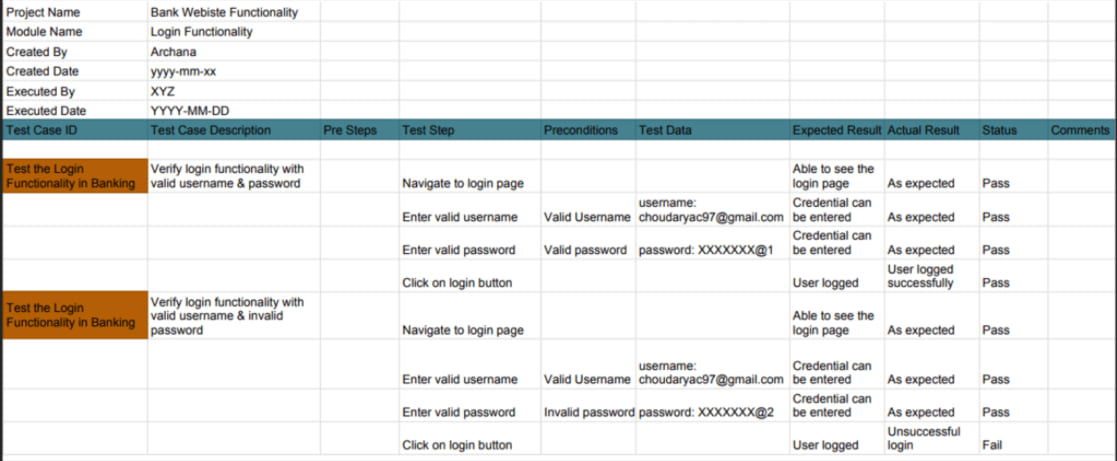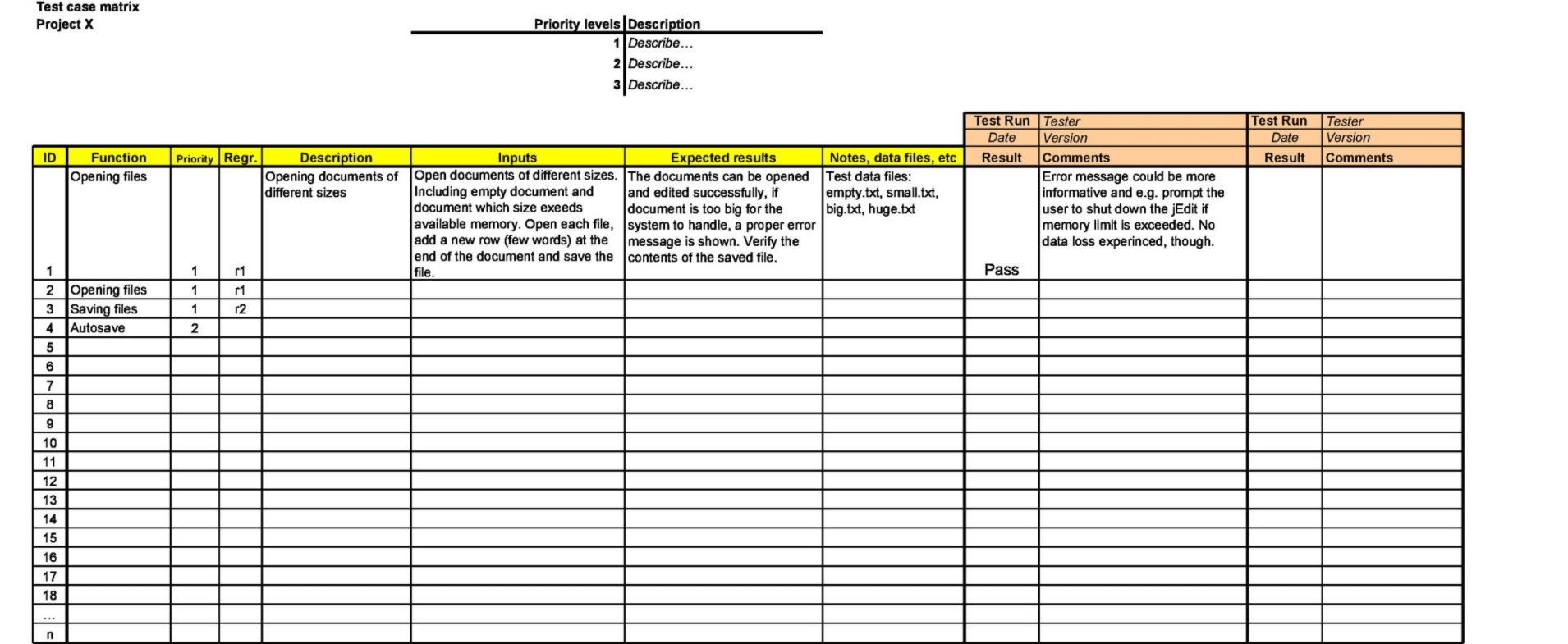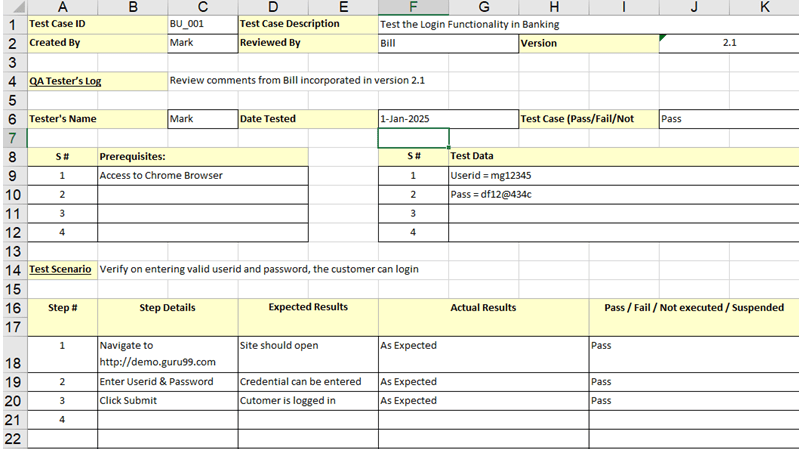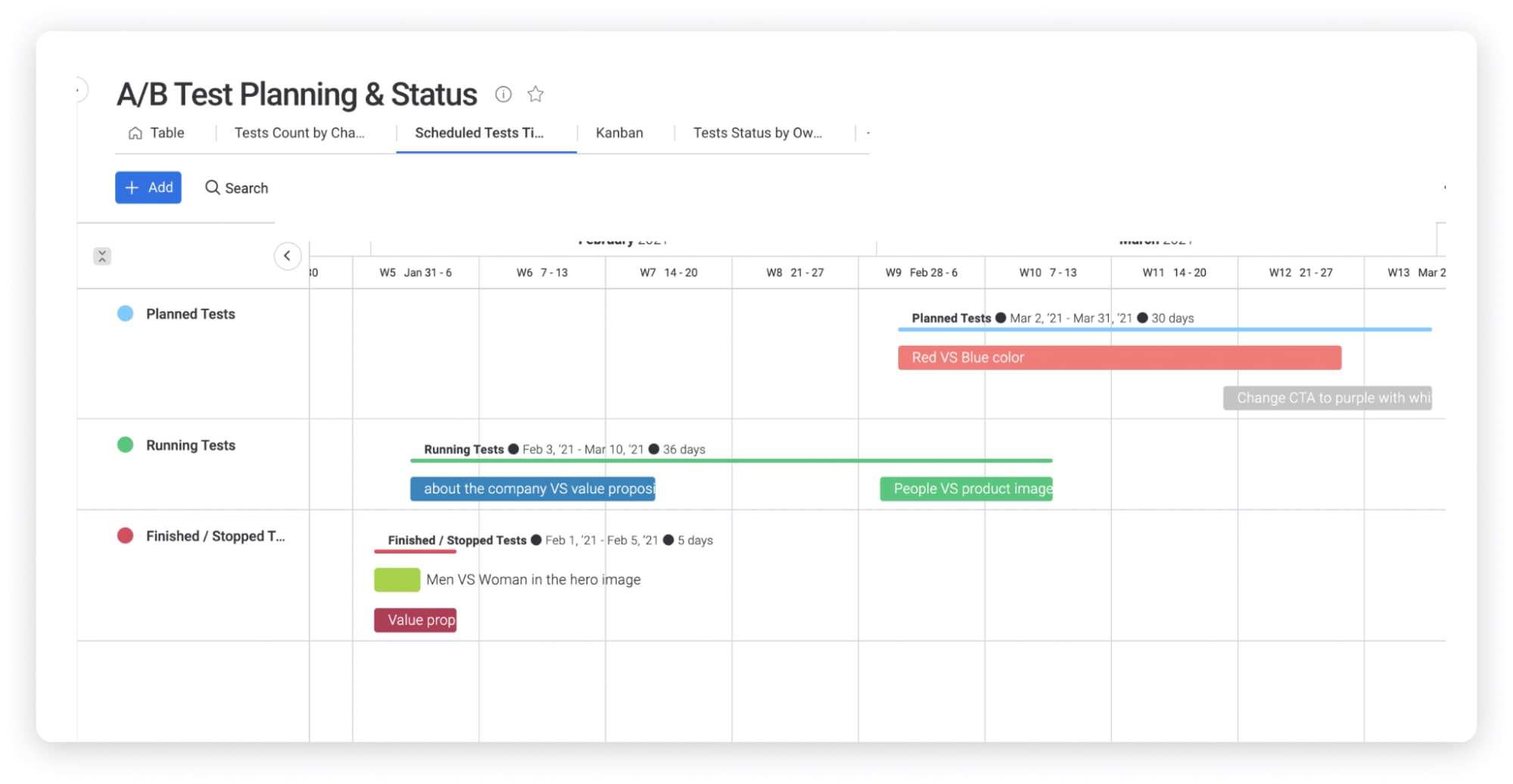Whenever you introduce new software features or functions, it’s not always smooth sailing. For example, the feature could be unresponsive on certain devices or not optimized for mobile — luckily a test case template can help you avoid all this. Creating a test case can help you identify any issues with software features before you roll them out.
To make things easy for you, we’ve created a test case template that streamlines the whole process. We also share how to fill out everything from preconditions to expected outcomes to avoid a bug-ridden system.
What is a test case template?
A test case template provides you with a comprehensive outline for verifying that software features work as intended.
When you write test cases, you should include information such as:
- Preconditions
- Description of the test case
- Test case ID
- Expected outcomes
- Test result
- Software feature status
Running a test case can reveal errors in your software and the template can accelerate the diagnosis process — identifying what doesn’t work and why — and help you narrow down a simple ‘pass or fail’ response. Of course, templates can do way more for your team.
Why use a test case template?
With a test plan and template, you can enter information both before and after testing to evaluate the software feature — for example, about how the login process functions on your mobile app. With this data, you can make important decisions regarding software improvements or troubleshooting.
Test case management tools such as the template can diagnose errors and give you a clear idea of the timeline to release. You can then use this data to give clients completion estimates or explain when they can expect an update to the software. The data can also inform your marketing strategy, as it allows you to confirm that the feature satisfies customer pain points.
So it’s no surprise, then, that software testing is on the rise. The industry surpassed $40 billion in 2020 and continues to grow at an astronomical rate.
Why? In-house manual testing through test cases can help you avoid PR crises and help you stay in lockstep with your competition. If you don’t regularly run test cases, you could deliver clients an unfinished and untested product, which is unlikely to bring rave reviews. Plus, when you use a template, you eliminate many of the risks associated with manual data entry.
Effective test execution hinges on accuracy. If you’re creating a new test case every time, there’s a chance you might forget to add a critical field or use a different format. With the template, you’re less likely to miss basic bug fixes that you should have known about.
What are some examples of test case templates?
Let’s explore some test case templates suitable for different use cases.
Login testing template
Use a test case template like this one to determine whether or not your login page works as it should. Login functionality is complex and critical to the user experience.
To verify that it’s working correctly, here are just a few of the many test cases you might have to run:
- ‘Forgot password’ feature
- Valid username and password login
- ‘Remember me’ feature
- ‘Show password’ feature
- The time it takes to process the login

As you can see, there’s a lot to test. As such, you can use a template like this one to map out the various tests you need to run and store all the data in a single place. After all, if your customers can’t log in to your app, they can’t use it.
File opening
Opening, managing, and sharing files is paramount to the user experience. If your business relies on data transfer or features basic file interaction, then you should run the appropriate test cases using a template like this one.

With this template, you can write out any relevant notes that can help you iron out errors with opening and saving files, for example. Before you run manual or automated tests it’s a good idea to list your expected results too, since this will let you know if your expectations match reality.
Browser access
If users can’t access your web-based software through a browser, you could miss out on a lot of sales. Around 50% of customers say that they would switch to a competitor after a single bad experience with a company. Just one 404 error is enough to dissuade many from giving your business another chance.

Using a template like this, you can quickly assess your software’s compatibility with various browsers. That way, no matter what browser a prospect uses, they’ll see your site as it should appear.
monday.com’s test case template
Use the monday.com Work OS test case template to inform your troubleshooting and guide your test case process. The template provides you with a clear formula for testing new and existing software features to keep everything running smoothly.
Including all the information you need to run a thorough test case, the template can help automate your test case creation process, removing a bottleneck that could hold up development.
The ability to copy and customize a premade document with a few clicks, as well as share and collaborate in real-time across locations, speeds up the process. Plus, custom notifications and automation rules ensure you leave no stone unturned when you assess your software features.
You can also easily create custom fields for anything you want to prioritize using our drag-and-drop editor. That makes it easy to craft a template that reflects the goals of your development team. Plus you can visualize a timeline of different tests as you develop them over time.

Plus, you can integrate the test case board with your product backlog and automatically sync any discovered bugs to add them to the development list. That also gives managers and executives a whole new level of oversight over test cases and the whole development process.
We’re not out of tips just yet.
Test case template tips and tricks
Check out some of our top best practices for maximizing your test case template.
1. Analyze test scenarios
To create an effective test case and fill out the template correctly, you must analyze various software test scenarios. With test scenarios, the idea is you want to test all potential issues you could come across with your software. That way, you can be sure that the final product is less prone to major errors.
Test scenarios also let you see how the software performs in different contexts for different users. Not every interaction with the software will be the same, so you need to make sure your software caters to all the necessary users.
2. Use high-quality test data to test your software’s features
Test data is the backbone of any good software testing process. Test data is simply data that’s fit for testing purposes. It should be complete and reflect what a real customer would enter into your app or platform.
If your data set is incomplete, that can be responsible for a lot of the bugs and faults in test cases. So the best thing to do is often to follow through your own onboarding processes and create a test user manually.
- Create a checklist for all data points that must be included
- Create an actual user and follow your own onboarding process
- Wherever doing things manually isn’t practical — like adding 1,000 posts to check if your software can handle high volume — add test data directly into the database, for example with SQL
3. Use clear language
When creating test cases using a template, keep the language clear and concise. For example, when describing a login error, don’t just list the error code, explain what happened and where: “Login error on Android app after updating to version 0.73.”
Peer review from a software tester is an important part of the process, so it’s essential that others can understand the parameters of the test and what exactly the result means.
Still have questions? We’ve got you covered.
FAQs about test case templates
Let’s answer some common questions about test case templates.
How do you write a test case with a template?
To write a test case with a template, think about how you want your software to work and by what metrics you’ll measure success. For example, it may be as simple as running an evaluation of your login screen to ensure everything from the ‘forgotten password’ to the login process is working correctly.
Once you understand what you want, start filling out the template document. Typically, you should include preconditions, desired results, and a test description to get a clear picture of the software’s functionality. A robust solution like monday.com gives you all the flexibility to add whatever you need.
What are the key components of a test case template?
Test case templates have several key components, including standard fields like:
- test description
- test case ID
- QA tester log
- preconditions
- expected outcomes
- results
All of this information should give you an idea of what software feature is being tested, the test steps, what your expectations are, and what the results showed. This can then be passed on to the appropriate department for fixes or approval.
What is test case design?
Test case design simply refers to the process of creating test cases. Ideally, you would create simple, clear test cases for anyone who needs to interpret the results or add their input.

